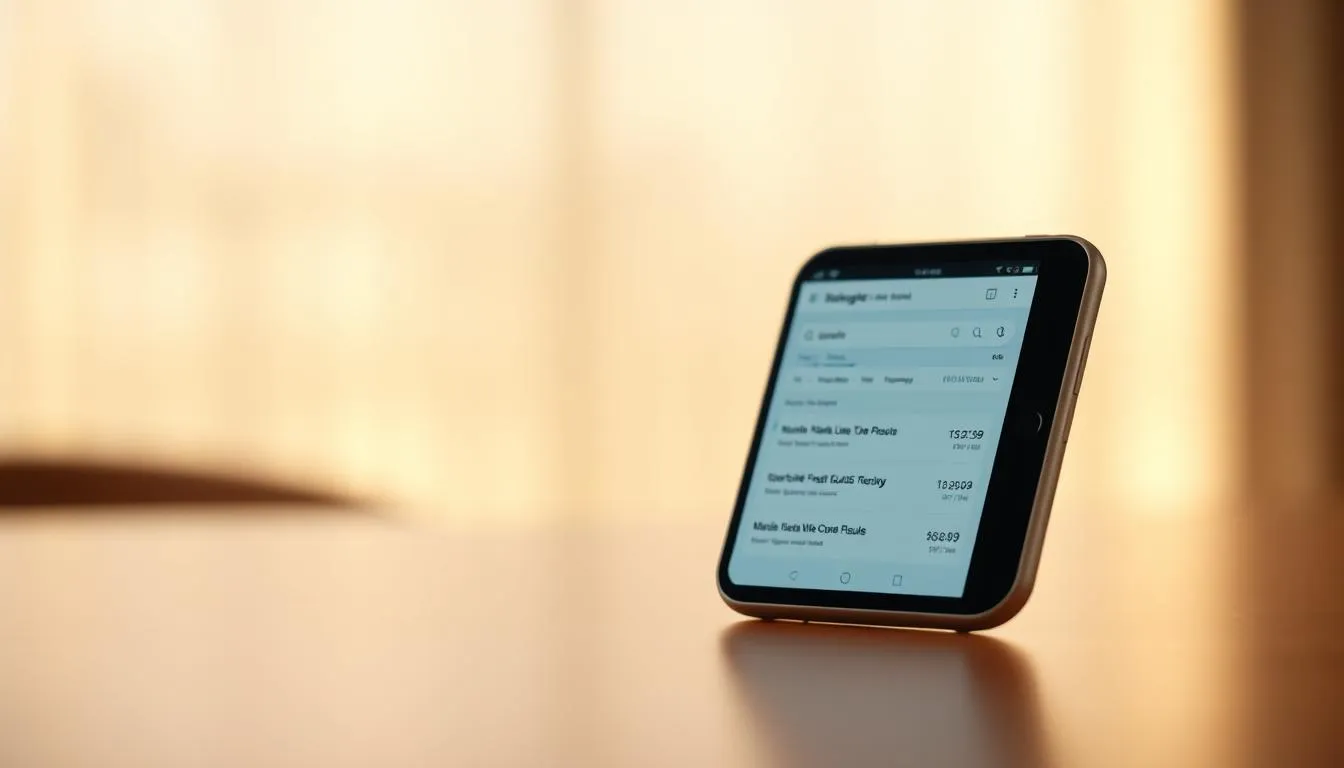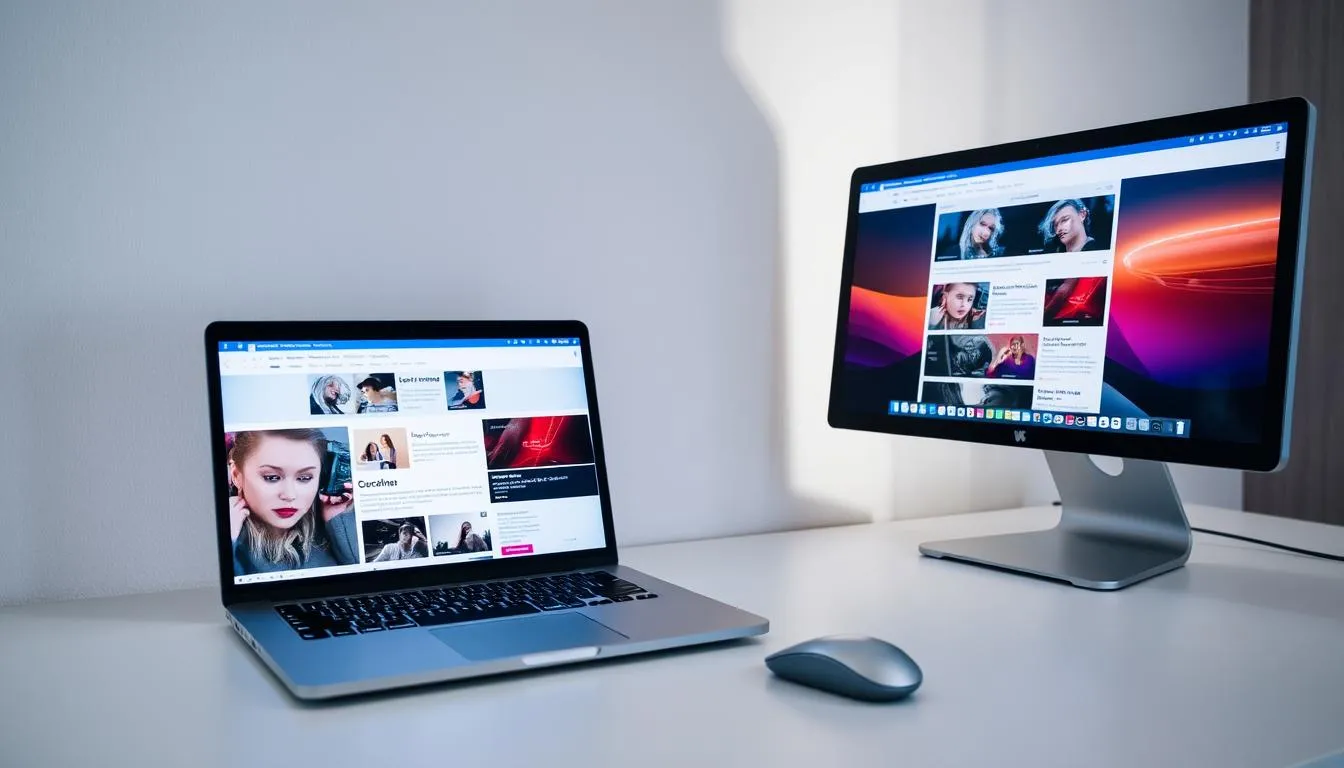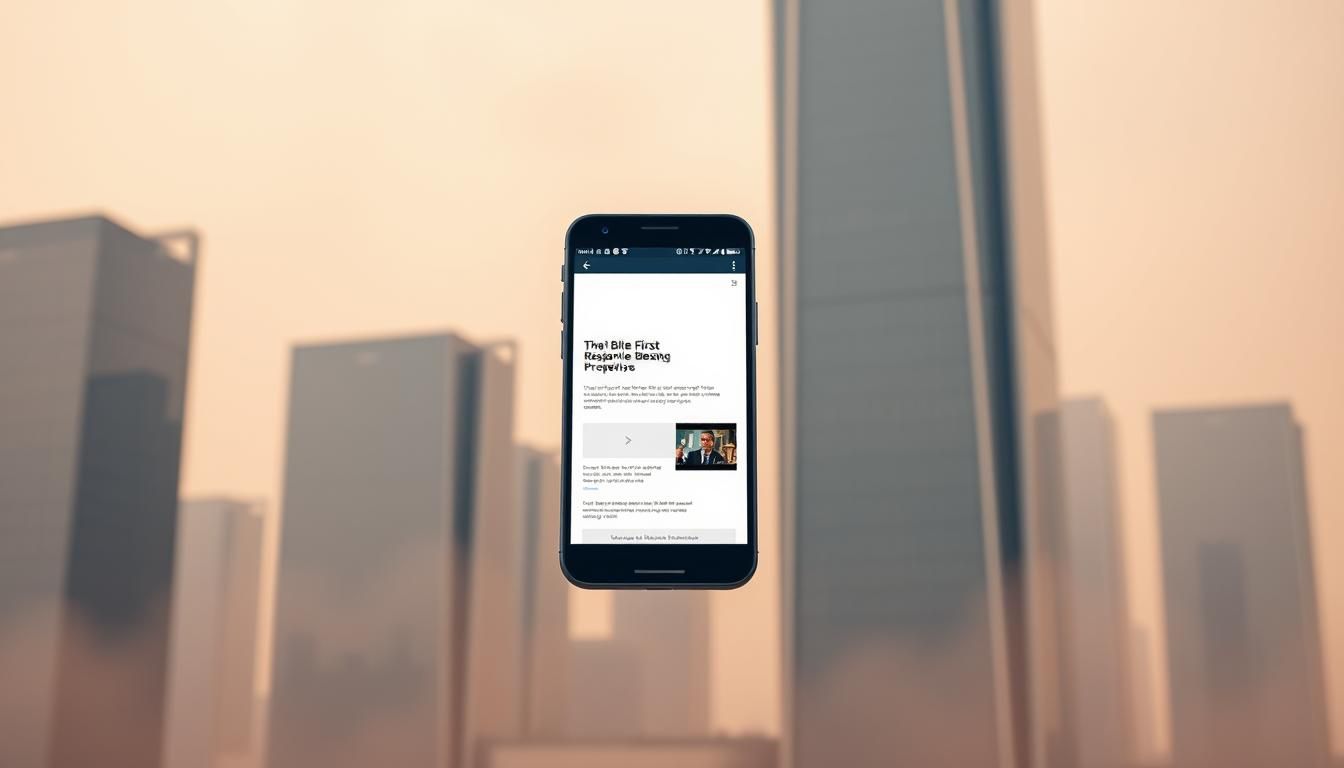Surprising fact: Google now crawls every remaining site with its smartphone agent, so pages that hide content from phones can be dropped from the index.
Mobile-first indexing means Google uses the sites mobile version for indexing and ranking. That makes it essential to serve equivalent primary content, matching headings, metadata, and structured data across versions.
Start by ensuring Google can access and render your mobile pages, including CSS, JS, images, and videos. Check robots meta tags and canonical links so the index sees the same information on both versions.
Page speed, Core Web Vitals, and ad experience also shape ranking and user experience. Use tools like Google Search Console to inspect URLs, submit sitemaps, and monitor device reports as you fix issues.
For a practical guide on adapting your site and best practices, see this resource at mobile SEO recommendations.
Key Takeaways
- Google uses the smartphone agent for indexing; mobile pages must show full content.
- Match primary content, structured data, and metadata across versions.
- Ensure essential assets (CSS, JS, images) arent blocked so pages render correctly.
- Optimize page speed and Core Web Vitals to protect visibility and ranking.
- Avoid intrusive ad formats and follow Better Ads Standards for a solid user experience.
- Use Search Console tools to inspect, test, and monitor mobile rendering and indexing.
Why MobileFirst Indexing Matters in the Present Day
Googles complete switch to the smartphone crawler in July 2024 changed how sites must present content to remain visible. After that date, Google uses the Googlebot Smartphone to crawl and index the vast majority of pages. This makes access parity between handheld and desktop versions essential for indexing and ranking.
The July 2024 shift and what it means in 2025
On July 5, 2024, Google moved the remaining sites from desktop crawling to its smartphone agent. The practical result: if vital content is missing or blocked on smaller screens, it wont be indexableeven if the desktop site is flawless.
How usage and UX drive indexing and ranking
Google still maintains one unified index and shows the most suitable URL in search results. But it evaluates the handheld view when making indexing decisions. That means touch-friendly navigation, readable text, and visible media affect how the engine interprets your site and ranks pages for users.
- Fix blocked assets: ensure CSS, JS, images render for the crawler.
- Match content and metadata: keep titles, structured data, and primary text equivalent across views.
- Use Search Console: URL Inspection helps confirm how Google renders and indexes your pages.
mobilefirst SEO: Definitions, Scope, and How Google Crawls Today
How Google sees a page now shapes whether that page gets indexed and how it ranks in search. The engine largely reads the mobile version of a page with its smartphone Googlebot, and those signals feed a single, unified index.
One index, smartphone Googlebot priority
Google does not maintain a separate mobilefirst index. Instead, the crawler collects content, structured data, and metadata from the mobile version of the page and uses that data in the unified index.
Mobilefirst indexing versus mobile usability
Indexing focuses on accessibility of content, not necessarily on how easy the page is to use. A PDF or other hard-to-navigate file can still be fully indexed if its text and links are visible to the crawler.
“Accessibility of information matters more for indexing than presentation.”
Teams should inventory templates, modules, and media to confirm the mobile DOM includes essential information like pricing, availability, author, and publish date.
- Check for missing FAQs, truncated product descriptions, or absent structured data on the mobile version.
- Document differences between desktop and handheld views and fix omissions to prevent ranking drops.
- Review analytics to find where mobile device behavior may signal content or experience gaps.

| Area | Indexing Signal Source | Action |
|---|---|---|
| Primary content | Mobile version | Ensure parity with desktop; include full text and headings |
| Structured data | Mobile DOM | Keep same schema types and correct URLs |
| Media (images/videos) | Rendered assets | Allow CSS/JS so crawler can fetch and render |
For implementation details and a practical checklist, consult this mobile SEO guide.
Choosing Your Mobile Configuration: Responsive, Dynamic Serving, or Separate URLs
Choosing the right delivery pattern affects crawling, indexing, and long-term maintenance of your website.
Responsive design: one URL, one HTML
Responsive design serves the same HTML on a single URL. That keeps metadata and structured data consistent and simplifies crawling and indexing.
Use fluid grids, proper viewport settings, and clear breakpoints so the same file adapts across browsers and devices without hiding critical content.
Dynamic serving: same URL, different HTML
Dynamic serving keeps one URL but swaps HTML based on user-agent. It enables device-specific layout or content while preserving link equity.
Implement the Vary: user-agent header and test that the smartphone crawler receives full pages and assets to avoid indexing gaps.
Separate URLs (m-dot): more control, more work
Separate URLs host device-specific pages on different addresses. This gives control but raises maintenance costs for redirects, canonicals, and parity checks.
Document rel=canonical and rel=alternate templates and validate them in production so the correct version is indexed and duplicate content is avoided.
- Parity matters: match primary content, headings, links, and structured data across versions to protect indexing signals.
- Weigh engineering capacity, CMS support, and long-term maintainability when choosing a pattern.
- For implementation details and validation tips, review the official guidance.
Content Parity and UX Consistency Across Mobile and Desktop
Make parity a priority: the version shown on smaller screens determines how pages are indexed. Missing core content on that view directly reduces your ability to rank and be found.
Keep primary content equivalent on both versions. Use the same clear headings and full body text. Moving long sections into accordions or tabs is fine if the content stays present and accessible to the crawler.
Headings, internal links, and touch-friendly navigation. Mirror internal links and navigation paths so users and crawlers can reach the same depth of pages. Make tap targets large enough and spacing generous to avoid accidental taps or forced zooming.

| Area | Requirement | Quick Action |
|---|---|---|
| Hero copy | Same text and metadata | Verify template outputs match desktop |
| Navigation | Equivalent links and breadcrumbs | Compare link lists and test crawl paths |
| Important modules | Render on initial load | Avoid lazy-load behind clicks |
| Readability | Scannable paragraphs and subheads | Short paragraphs, descriptive subheadings |
Audit templates for parity: check hero text, specs, FAQs, reviews, CTAs, and in-article links. Track engagement by device to find layout friction. Consistent UX improves both indexing and conversions for users moving between views.
Structured Data, Titles, and Meta Descriptions Alignment
Consistent markup and metadata across views keep rich result eligibility stable.
Match schema and visible content so the crawler sees the same entities your users do. Mirror structured data between desktop and the mobile version of each page to protect eligibility for breadcrumbs, product snippets, and video features.
Use the same schema types and correct URLs on the mobile page
Include the correct URLs inside JSON-LD on the mobile version to prevent extraction errors. Validate markup in testing and production so fields like name, url, image, and availability reflect the rendered page.
Ensure titles and meta descriptions are equivalent
Keep titles and meta descriptions identical across versions. Use concise, intent-focused text that matches on-page headlines and improves the chance of stable search results display.
| Item | Required Action | Why it matters |
|---|---|---|
| Structured data parity | Mirror JSON-LD and schema types | Prevents missing markup errors and broken enhancements |
| Schema URLs | Use page-specific URLs for the rendered version | Avoids mismatch between markup and rendered data |
| Titles & meta | Keep equivalent text and align with H1 | Improves CTR and reduces indexing confusion |
Train Data Highlighter on the site if you use it, and run periodic checks when templates change. At launch, compare rendered HTML across desktop and the other version, confirm parity, and resolve any canonical or schema URL conflicts.
Optimizing Images and Videos for Mobile Devices and Search Results
Consistent media handling prevents indexing gaps: stable filenames, supported file formats, and descriptive alt text let crawlers and users see the same content on every version of a page.
 Images: use high-quality images with the same filenames, captions, and alt text as the desktop site. Prefer supported formats and avoid embedding raster files inside inline SVG <image> tags that search engines cant read.
Images: use high-quality images with the same filenames, captions, and alt text as the desktop site. Prefer supported formats and avoid embedding raster files inside inline SVG <image> tags that search engines cant read.
Keep image URLs stable across loads and site updates. If URLs change frequently, indexing of assets can fail and impair page visibility.
Video placement and markup
Place videos where they are easy to find on a small device so users dont have to scroll excessively. Use supported tags like <video>, <embed>, or <object> and keep video URLs stable.
Structured data: implement VideoObject schema the same way on each version. Include name, description, thumbnailUrl, and uploadDate, and ensure the URLs in markup match the rendered page.
- Ensure media resources arent blocked by robots.txt and render without user interaction.
- Use responsive sizing and next-gen formats to balance quality and load time.
- Audit alt text to reflect purpose and improve accessibility and indexing signals.
Performance Best Practices: Core Web Vitals and Mobile Page Speed
Focus your efforts on the metrics that matter to real visitors: load, responsiveness, and visual stability.
Center work around LCP, INP, and CLS measured for the mobile version of a page. These reflect how fast the largest element paints, how quickly the site reacts to input, and whether content jumps on the screen. Monitor these signals to protect indexing and ranking outcomes.
Diagnostics with PageSpeed Insights and Lighthouse
Use PageSpeed Insights to capture field data and actionable diagnostics tied to real users. The tool maps issues to specific resources and shows which scripts or images delay render time.
Run Lighthouse audits to simulate lab scenarios, confirm regressions, and spot fixes like deferring offscreen images, code splitting, and minification.
- Improve LCP: optimize server response, preload hero images or fonts, and reduce render-blocking resources.
- Tame INP: break up long tasks, trim heavy third-party scripts, and reduce main-thread work.
- Control CLS: set explicit size attributes, reserve space for dynamic content, and avoid late-loading UI that shifts layout.
“Translate diagnostics into a prioritized backlog and attack high-impact, low-effort fixes first.”
Monitor CrUX field data over time to ensure improvements persist for users and to tie faster load and better stability to measurable site results.
Critical Technical Controls for Indexing and Ranking
Small mismatches can remove pages from results. Protect visibility by validating directives, response codes, and media access on every site version before releases.
Robots.txt and robots meta tags parity
Keep robots directives identical across desktop and the mobile version of each page. Do not add noindex on one version while the other is indexable.
Avoid lazy-loading primary content behind interactions
Primary content must render without taps or extra input. If the crawler cant fetch core text or images, that content wont exist for indexing.
Canonical/alternate setups, hreflang mapping, and fragment URLs
For separate URLs, point desktop to itself and add rel=alternate to its mobile pair; mobile should canonicalize to desktop. Keep hreflang pairs consistent per version to avoid international confusion.
Avoid fragment-based URLs (#) for important pages. Use clean, unique URLs so the index can crawl and store them reliably.
Ad placements that respect Better Ads Standards
Audit ad slots so they dont hide content or force excessive scrolling. Intrusive formats harm UX and can indirectly affect indexing and search results.
- Synchronize error codes; a 200 on desktop but a 404 on another version removes that page from the index.
- Ensure scripts and media for the site arent blocked so crawlers can render and collect accurate data.
- Build automated monitors to catch directive, canonical, or response-code mismatches early.
Monitoring, Separate-URL Safeguards, and Troubleshooting Common Issues
Make monitoring a routine: use Search Consoles URL Inspection to confirm how Google renders a page and whether it is indexed. Run quick checks after deployments so problems are caught early.
Search Console: URL Inspection, sitemaps, and device reports
Inspect representative URLs to debug resource loading, JavaScript execution, and structured data. Submit accurate sitemaps to speed discovery and verify both desktop and mobile properties for separate URLs.
Capacity for crawl rate and error status parity
Hosting matters: ensure your site can handle higher crawl activity. Keep status codes alignedif a desktop page returns 200, its counterpart must do the same to avoid deindexing.
Fixing common issues
Restore missing structured data, remove accidental noindex tags, and unblock or replace low-quality images. Fix video problems by using supported tags, stable URLs, and matching VideoObject markup so the crawler sees visible media.
- Use device reports to correlate performance with Core Web Vitals and crawl stats.
- Eliminate fragment URLs and faulty redirects that collapse pages into a single target.
- Build a short QA checklist and run it after every release; keep a log of fixes and site indexing resources for reference.
“Daily inspections save time and protect visibility.”
Conclusion
Review your highest-traffic pages to confirm they show the same primary content, metadata, and structured data on each view. That single change protects how Google performs indexing and affects your ranking in search results.
Follow core best practices: keep media visible and stable, match titles and schema, and respect ad standards so users trust your site. Prioritize LCP, INP, and CLS fixes using PageSpeed Insights and Lighthouse to turn diagnostics into user-facing gains.
Maintain strict technical hygieneconsistent robots directives, correct canonicals and hreflang, no fragment URLs, and aligned error codes. Use Search Console as your control center, run a quick parity audit today, and prioritize fixes that stabilize rankings fastest over time.
FAQ
What does the July 2024 shift mean for sites in 2025?
The July 2024 change signaled Google’s stronger emphasis on the smartphone Googlebot when building the index. In 2025, that means search ranking and visibility depend on the content, structured data, and performance of the site version served to handheld devices. Ensure your primary content, metadata, and URLs are equivalent on all versions so Google can surface the best information to users on any device.
How does Google crawl today and why is one index important?
Google now uses a single index with priority given to the smartphone crawler. That simplifies indexing but raises the bar: the version seen by the smartphone crawler should contain the same primary content, structured data, and links as desktop. If the crawler finds less content or missing schema on the smaller view, rankings and rich results may be affected.
Should I use responsive design, dynamic serving, or separate URLs?
Responsive design is Googles recommended pattern because it uses a single HTML and URL for all devices, which reduces maintenance and copy issues. Dynamic serving and separate URLs can work but require careful Vary: user-agent headers, canonical and alternate tags, and strict parity checks to avoid indexing or ranking problems.
What is content parity and why does it matter?
Content parity means the primary content available to desktop users is also available to the handheld crawler. Parity ensures headings, images, internal links, and structured data align, so users and search systems see consistent information. Missing content on the smaller site can lower relevance and harm rankings.
How should I handle structured data, titles, and meta descriptions?
Use the same schema types and correct absolute URLs on the version served to handheld devices. Keep titles and meta descriptions equivalent and accurate across versions. Mismatched or missing structured data can prevent rich results and reduce click-through rates in search results.
What are best practices for images and video on handheld screens?
Serve high-quality images in supported formats, use stable URLs, and include descriptive alt text. For video, place visible player markup, use supported tags, and add video structured data. Avoid blocking media files via robots.txt; search needs access to index and surface visual content in search results.
Which performance metrics should I prioritize for the handheld version?
Focus on Core Web Vitals for the handheld experience: Largest Contentful Paint (LCP), Interaction to Next Paint (INP) or similar interaction metric, and Cumulative Layout Shift (CLS). Use PageSpeed Insights and Lighthouse to diagnose issues and track improvements on the device-specific version.
What technical controls are critical to prevent indexing problems?
Ensure robots.txt and robots meta tags are consistent across versions so crawlers can access primary content. Avoid lazy-loading essential content behind interactions that block initial indexing. Maintain correct canonical/alternate relationships, implement hreflang properly, and steer clear of fragment-only URLs for important pages.
How should I manage ads to avoid penalties or UX harm?
Place ads in ways that respect the Better Ads Standards. Avoid intrusive interstitials or sticky elements that obscure primary content on small screens. Poor ad placement can harm user experience and increase bounce rates, which may indirectly affect search performance.
What Search Console tools help monitor the handheld version?
Use URL Inspection to see how Google renders and indexes the device-specific page. Submit device-aware sitemaps, review the Mobile Usability and Page Experience reports, and check crawl stats for differences in rate or errors between versions. These tools reveal mismatches and blocked resources.
How do I handle crawl rate and error parity between versions?
Monitor crawl stats and server logs for both user-agent types. Keep crawl capacity in mind for high-volume sites and ensure error status parity: a page returning OK on desktop should not return errors or blocked resources to the handheld crawler. Fix server-side redirects and status codes promptly.
What common issues should I troubleshoot first?
Start with missing structured data, blocked or low-quality images, and video playback or indexing problems. Check for hidden primary content behind tabs or click-to-expand elements, and verify that titles, meta descriptions, and schema appear in the handheld-rendered HTML.
Which additional keywords relate to these topics that I should watch for?
Pay attention to terms such as responsive design, structured data, Core Web Vitals, PageSpeed Insights, Lighthouse, robots.txt, canonical, hreflang, crawl rate, render, index, ranking, user experience, performance, images, videos, and device reports when optimizing your site.
